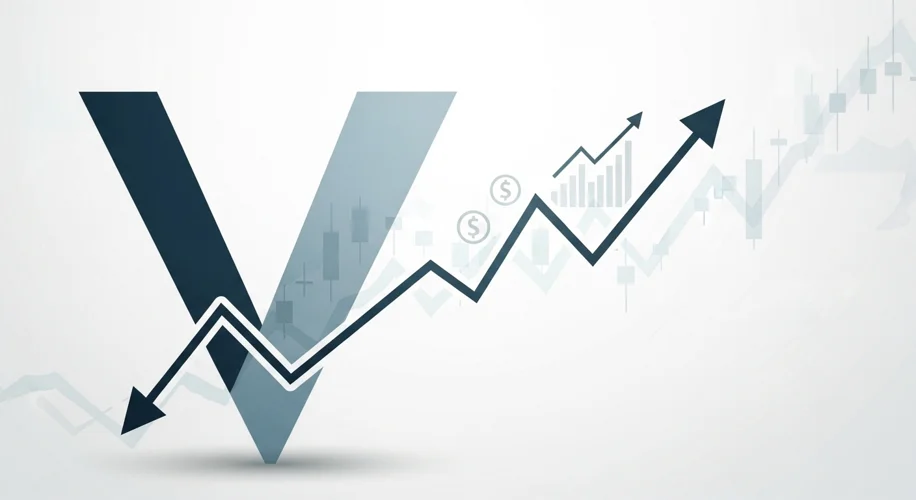It’s July 27, 2025, and the market sentiment often revolves around ‘V-shaped recoveries’ in stock prices. We’ve seen this pattern play out before, where prices plummet and then rebound sharply, resembling the letter ‘V’. But what’s truly behind this sharp upward trend? My analysis suggests that a V-shaped recovery in stocks is fundamentally a V-shaped recovery in corporate earnings.
Let’s dive into the data. When a market experiences a downturn, it’s often triggered by economic headwinds, geopolitical events, or unexpected crises. During these periods, investor confidence falters, leading to sell-offs that push stock prices down. However, if the underlying economy and corporate profitability remain resilient, or even show signs of quick improvement, this can fuel a swift rebound in equity values.
The key driver for this rapid recovery isn’t just sentiment; it’s the actual financial performance of companies. Earnings reports are the bedrock upon which stock valuations are built. When companies report that their revenues and profits are not only meeting but exceeding expectations, especially after a period of expected decline, it validates the market’s optimism.
Consider a hypothetical scenario: A global supply chain disruption impacts various sectors. Initially, investors might dump stocks across the board, anticipating a significant hit to earnings. However, if companies quickly adapt – perhaps by diversifying suppliers, optimizing logistics, or passing on costs – their subsequent earnings reports might show a much smaller impact than feared, or even growth. This positive earnings surprise can act as a powerful catalyst, pulling stock prices back up in a ‘V’ formation.
My focus areas in finance often lead me to examine emerging markets and the FinTech space. In these dynamic environments, agility and innovation can lead to very rapid shifts in profitability. For instance, a new payment solution that gains rapid adoption or a technology that significantly cuts operational costs can boost a company’s earnings faster than traditional businesses might.
For traders and investors, understanding this dynamic is crucial. It’s not enough to simply spot a V-shaped price movement. The real insight comes from analyzing the earnings data that supports it. Are companies genuinely earning more, or is the price movement driven by speculation? By looking at earnings trends, we can better assess the sustainability of a market recovery.
It’s important to remember that while a V-shaped recovery in earnings can be impressive, it’s not guaranteed. Market conditions can be complex, and external factors always play a role. My approach involves digging into the fundamentals, looking at the data behind the headlines, and understanding what truly drives value. This analytical approach helps in navigating market volatility and identifying opportunities.
So, the next time you see a stock or the broader market making a swift V-shaped recovery, remember to look beyond the price chart. The real story is often found in the earnings reports that signal resilience and growth.

